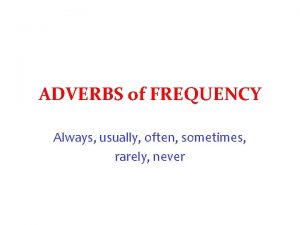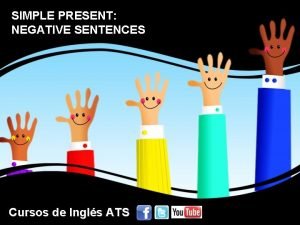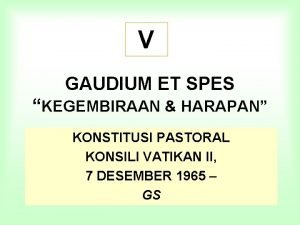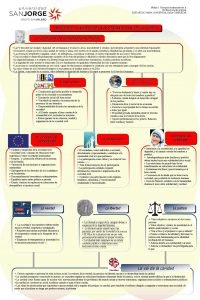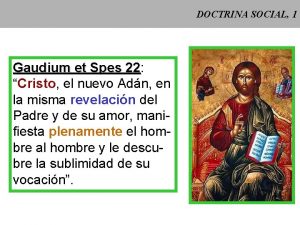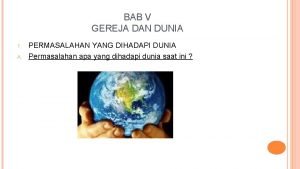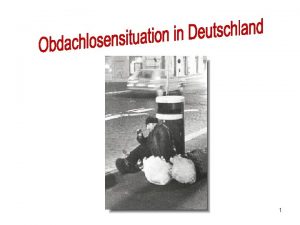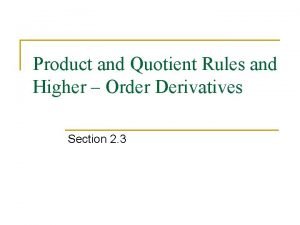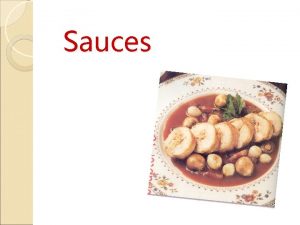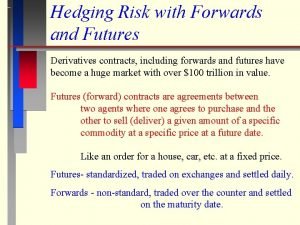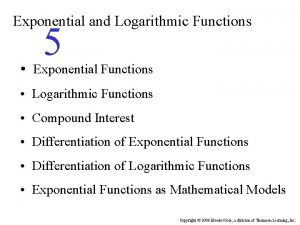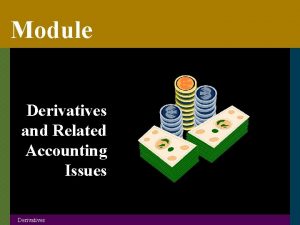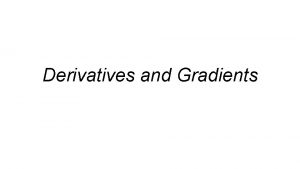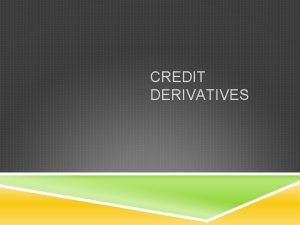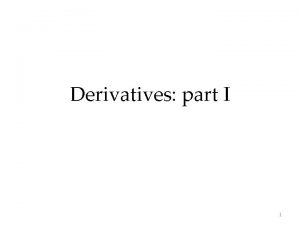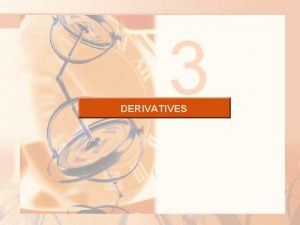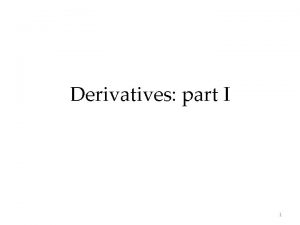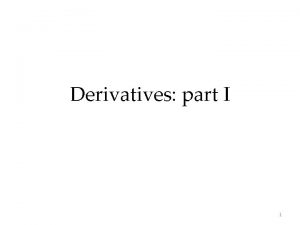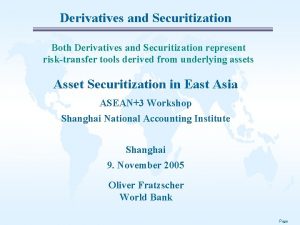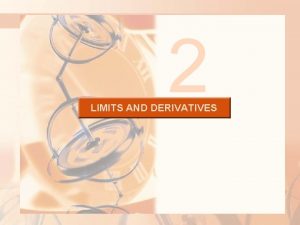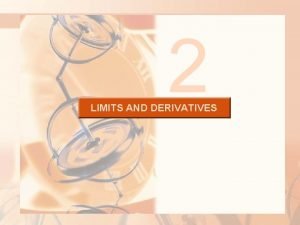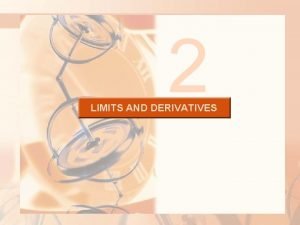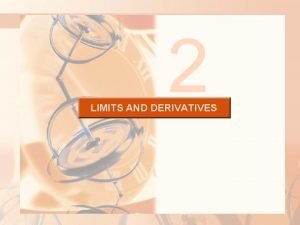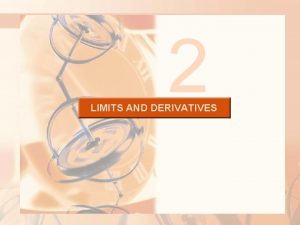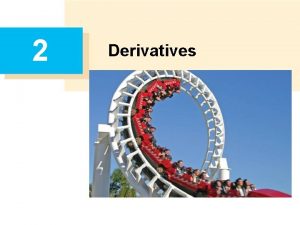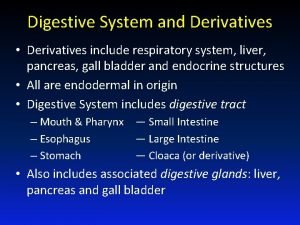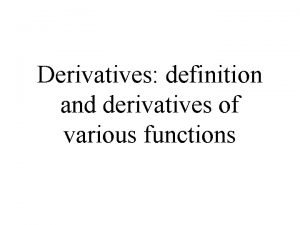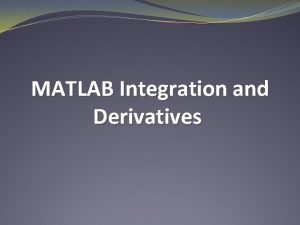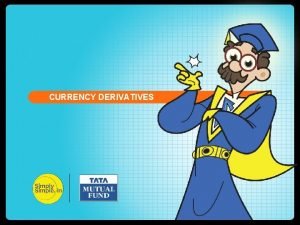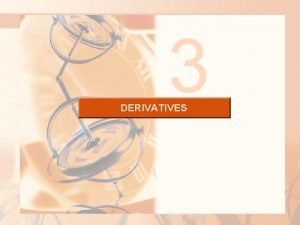Derivatives and SPEs SPEs or VIEs Very often























- Slides: 23

Derivatives and SPEs

SPEs or VIEs • Very often used to engage in off balance sheet financing. • Enron scandal (several hundred SPEs, no consolidation) used to hiding losses

SPEs or VIEs • Old Rules: as long as outside investors had at least 4% equity – no need to consolidate as long as (ostensibly) they were in a control position. In reality, parent company ran the investment.

SPEs or VIEs • Interim Change: Same rule, but outside investment requirement raised to 10% • New Rule (FIN 46 R): Risk and reward model. -

Derivatives Financial contract which derives its value (changes value) based on the value (change in value) of some underlying item. Essentially: Bets • Examples: Futures, Forward contracts – Stock options – Interest swaps

Derivatives • A contract promising to buy/receive (or sell/pay) something in the future. • Initial cost is minimal, may lead to great reward or loss. • Example: Stock option: right to buy a share of stock for $40. If at the time the option can be exercised, market price for the stock is $60 = $20 profit, option will be exercised. If market price is $30 = no exercise.

Derivatives: Potato futures contract. • 3 parties: • Farmer grows potatoes, wants to lock in a price in the future. Is worried that prices might fall. Enters into a futures contract to sell potatoes at $30 per ton in 120 days. • Mc. Donalds needs potatoes, worries prices may rise. Buys futures contract to purchase potatoes at $30 per ton in 120 days. • Broker – middleman facilitates contracting. Could be done directly, but not very practical

Potato futures contract II • Time goes by. Spot market price for potatoes as well as futures prices for potatoes CHANGE. Speculators (“Arbitrageurs”) constantly buy and sell contracts. • Eventually, contracts are settled. May or may not require delivering/taking possession of potatoes. One party “wins”, one party “loses” -> at time of settlement, spot price is $ 35 a ton. Who wins, who loses?

Potato futures contract III • At time of settlement, spot price is $ 27 a ton. Who wins, who loses? • Purpose of action described (for both the farmer and Mc. Donalds) is to “HEDGE” = • Protect against future price declines (increases) with only limited risk. They actually need to sell/buy potatoes

Potato futures contract IV • Arbitrageurs buy and sell contracts constantly – this is what eventually results in the “market (spot) price • Arbitrageurs “Speculate” (polite way of saying “gamble”) Their role is to “make prices” for many types of financial instruments and commodities. They do not EVER want to see potatoes (except on a plate) • The incur large amounts of risk, potential for great rewards or losses.

Derivatives: Interest Rate Swap • Company has $100, 000 outstanding debt, must pay fixed interest of 8% (4% twice a year). $ 4, 000 • Company believes interest rates will fall. • Company buys an interest swap contract. • Promises to pay a variable rate (LIBOR, e. g. ) and receive a fixed 4% twice a year. • Underlying equal to the outstanding debt.

Interest Rate Swap II • Variable rate: 3. 8% = $3, 800 • fixed interest = $ 4, 000 • Settlement: Company receives (pays) difference between fixed and variable rate = $200 • Effective interest this period: $3, 800

Interest Rate Swap III • Journal entry: Dr. Interest expense $3, 800 Dr. Cash $200 Cr. Cash (interest payable) $4, 000 This is an example of hedging

Exercise 17 -20: Net interest expense on 6/30/03 is A. B. C. D. $6, 000 $3, 350 $2, 850

Exercise 17 -20: Net interest expense on 12/31/03 is A. B. C. D. $6, 000 $3, 350 $2, 850

Exercise 17 -20: This interest swap is considered a A. B. C. D. Speculative hedge Fair value hedge Cash flow hedge Interest rate hedge

Options • Derivatives • Enable the holder to buy stock (or something else) at a predetermined price • Require that the issuer of the option sell the stock (other item) for a predetermined price

Options - Examples • Stock options • Futures (option to buy/sell commodities or currency, for example

Stock Options • Call options – gives holder the right to buy stock at a fixed price – Bet that stock price will increase • Put options – right to sell stock at fixed price – Bet that stock price will decline

Stock Options • • • May be issued as employee compensation Problem: Valuation Black-Scholes Option Pricing Model Other possible models Should options be recognized as expenses by the issuing company?

Accounting for Derivatives • FAS 133 – Fair value reporting required • Difficult to determine value of some derivatives • Requires sophisticated models (i. e. , Black Scholes option pricing model) • Based on a number of assumptions • Therefore inherently subject to guesses, estimates, revisions and controversies

Exercise 17 -19: The effect on net income on 3/31/02 was A. B. C. D. E. A gain of $ 3, 000 An unrealized holding gain of $ 3, 000 A gain of $2, 900 An unrealized holding gain of $ 2, 900 No effect

Answers: • • Slide 14: D Slide 15: C Slide 16: B Slide 22: D
 Often usually sometimes
Often usually sometimes Viés do observador
Viés do observador Marie tendresse dans nos vies
Marie tendresse dans nos vies Viés do observador
Viés do observador Viés da autoconveniência
Viés da autoconveniência Make negative present simple sentences
Make negative present simple sentences Very bad to very good scale
Very bad to very good scale Used to express very large or very small numbers
Used to express very large or very small numbers There is very few soup in the bowl
There is very few soup in the bowl Is a very shallow skillet with very short sloping sides
Is a very shallow skillet with very short sloping sides A little food or a few food
A little food or a few food Konstitusi pastoral gaudium et spes
Konstitusi pastoral gaudium et spes Mapa conceptual sobre la doctrina social de la iglesia
Mapa conceptual sobre la doctrina social de la iglesia Gaudiumetspes22
Gaudiumetspes22 Arti gereja postkonsilier
Arti gereja postkonsilier Gaudium et spes art 52
Gaudium et spes art 52 Gaudium et spes art 52a
Gaudium et spes art 52a 4 aufgaben der kirche
4 aufgaben der kirche Panggilan hidup berkeluarga
Panggilan hidup berkeluarga Product and quotient rules and higher order derivatives
Product and quotient rules and higher order derivatives Veloute sauce derivatives
Veloute sauce derivatives Primitive pharynx
Primitive pharynx Hedging and forward contracts
Hedging and forward contracts Derivative of exponents
Derivative of exponents
